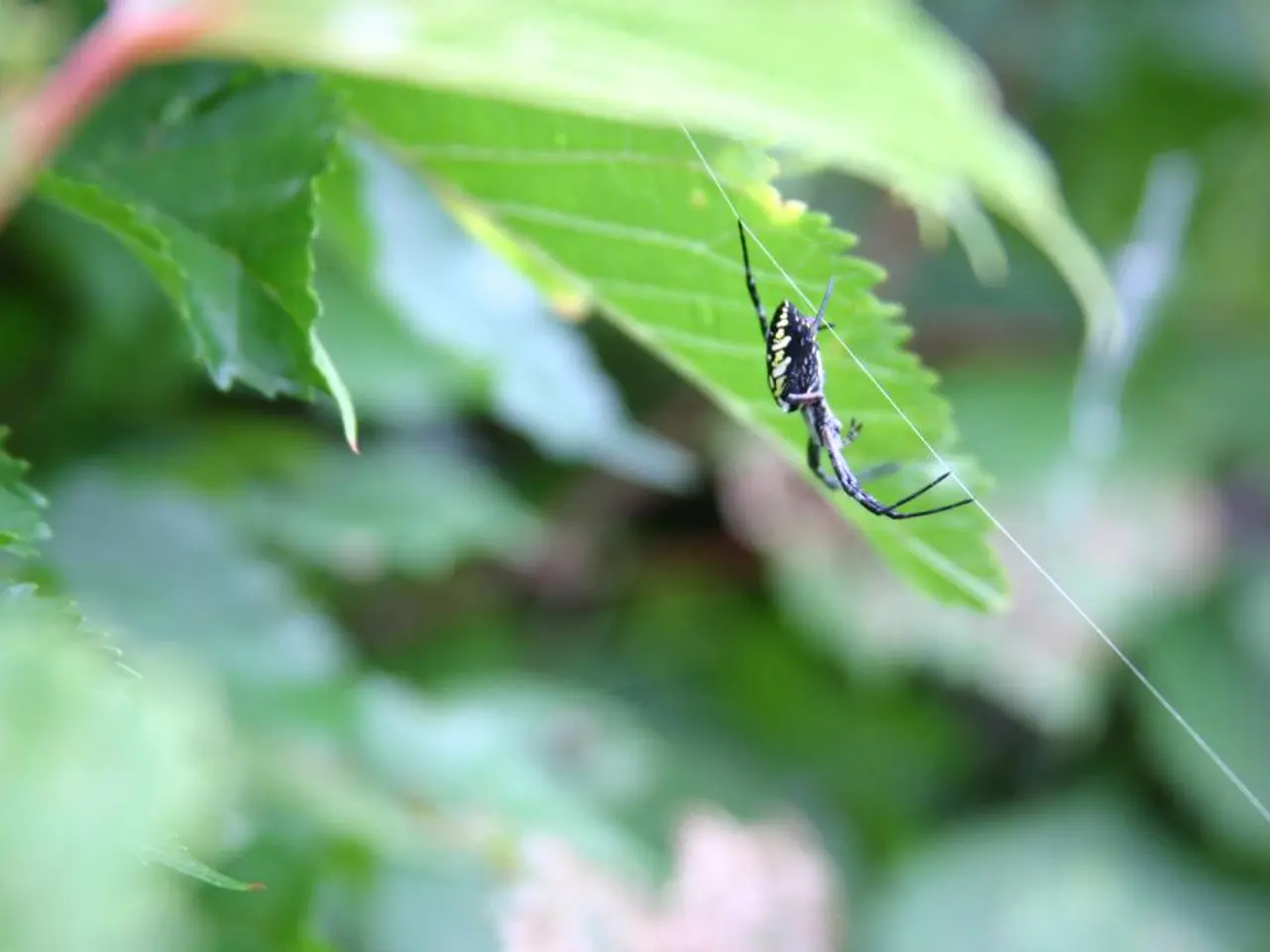Amen to Ohio's Foes: Leaping Arachnids - Jumping Spiders Take Center Stage
In the lush gardens of Ohio, a captivating group of arthropods thrives – the jumping spiders. Belonging to the Salticidae family, these agile creatures are not only abundant but also remarkably diverse.
Common species such as the Bold Jumping Spider (Phidippus audax), the Zebra Jumping Spider (Salticus scenicus), and the Tan Jumping Spider (Platycryptus sp.) can be found in Ohio gardens. These spiders are renowned for their exceptional vision, agile movements, and distinctive appearances.
The Bold Jumping Spider, with its black body adorned with white or orange spots, is one of the larger jumping spiders. Known for its bold, active hunting behavior, it does not build webs to catch prey but instead relies on its agility to stalk and pounce.
The Zebra Jumping Spider, with its black and white striped patterns, is small but very agile. It is often seen on exterior walls and fences where it hunts for insects.
Tan Jumping Spiders, typically tan or brownish, use camouflage to blend into tree bark or wooden surfaces in gardens. They are fast jumpers and excellent predators, preying on a variety of arthropods.
These spiders are well-adapted to their garden environment, their hunting strategies not relying on webs but on stalking and pouncing on prey. While orb weaver spiders are also common in gardens, they belong to a different family and are more known for making webs to catch prey.
Jumping spiders undergo a gradual metamorphosis, maturing from eggs into spiderlings through multiple molts. They have a wide diversity in appearance, including size and color, and are easily distinguished by their eye pattern – one very large pair at the front and center, and three pairs of smaller lateral eyes.
Males of many jumping spider species exhibit different color patterns than females, often with tufts of brightly colored hair. Courtship and mating behavior in jumping spiders have been extensively studied, with works such as "Annual Review of Entomology" and "Journal of Arachnology" providing insights into these fascinating processes.
During courtship, males perform a series of postures and motions, including bobbing, twitching, zigzagging, swaying, and pulsating abdomens. If a male encounters a nest holding a female, he may touch the nest and vibrate or probe it to get her attention. If the female within the nest is immature, the male may cohabitate with her until she reaches maturity and is ready to mate.
In some cases, a male jumping spider may enter a female's nest to mate once she has reached maturity. Female jumping spiders watch courtship attempts from a distance.
In the absence of prey, jumping spiders feed on pollen and nectar. They are active and skilled hunters, capable of feeding on a wide diversity of arthropods, from small, soft-bodied insects such as aphids and scales, to larger insects like grasshoppers and cockroaches, and even other spiders.
Jumping spiders also use silk to construct nests for shelter and protection, as well as to guard against predators during molting. This versatile and adaptable species continues to fascinate researchers and garden enthusiasts alike.
The study of jumping spiders, with their exceptional vision and agile movements, falls under the realm of pest management due to their role as beneficial predators that control the population of diverse arthropods in gardens, contributing to health-and-wellness and fitness-and-exercise by reducing the presence of harmful insects.
Moreover, the extensive research on courtship behaviors of jumping spiders, such as the intricate postures and motions during mating, provides valuable insights for the science of behavioral ecology, broadening our understanding of animal communication and social structures.




